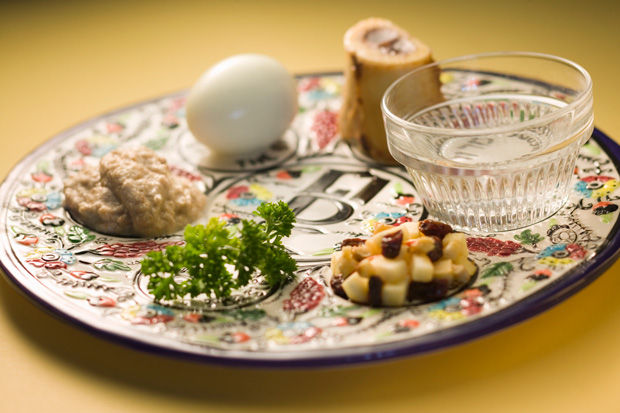Outside of the matzah box: A variety of seders around St. Louis
Published April 16, 2016
Every spring, Jewish people across the globe throw out their leavened bread and begin a week of eating matzah, matzah, and more matzah. Known as Passover, this Jewish holiday is when friends, family and members of the St. Louis community gather for seders.
Some people hold their seders on the first night of Passover, others the second night, or really just whenever their family has time during the week of Passover. Although the usual blessings, customs and songs are outlined in a Passover prayer book called a Haggadah, no two seders are completely the same. Seders can vary within denominations of Judaism, by location, or theme. Just within the St. Louis area, seders differ greatly among the Jewish teen community.
Yeshivat Kadimah High School senior Bella Adler has a traditional seder each year, which typically lasts about five hours.
“We observe a traditional Orthodox seder, where we go through the 15 steps of the seder outlined in the Haggadah,” Bella said, adding that she looks forward to the yearly seders because she likes spending quality time with her family.
“The environment is very laid-back,” said Bella. “Sitting at the head of the table is my grandfather, surrounded by my aunts, uncles, siblings and cousins. We read the Hebrew prayers, eat the special foods and act out the stories.”
Passing on traditions from generation to generation is important in Bella’s family. She plans to carry on these customs for years to come.
“My grandparents were taught by their parents how to lead a seder, and I am learning that same tradition,” she said. “They teach me the importance of preserving tradition while at the same time engaging even the youngest grandchild and making the whole night exciting and fun.”
Ladue Horton Watkins High School sophomore Macey Goldstein participates in Cultural Leadership, a program in which Jewish and African-American students learn to become social justice leaders. As part of Cultural Leadership, Macey takes part in a holiday swap, which exposes people of one religion to holidays of another.
“For our seder this year we are hosting with another Jewish Cultural Leadership family. So, in addition to our two families and our grandparents, two or three African-American Cultural Leadership families will be joining us,” Macey said.
At Hillel at Washington University in St. Louis, college students have the option of participating in several different seders.
“In 2015, over 500 students participated in seder experiences with Wash. U. Hillel, and that number continues to grow,” said Hillel Executive Director Jackie Levey.
The Hillel First Night Seder will have about 150 students and special guests, with students seated alongside guests. The Do Your Own Seder initiative is an opportunity for students to lead their own seder with a smaller group in their apartment or dorm. The Home Hospitality option is a chance for students to be paired with a local Jewish host family.
“Jewish students come to Wash. U. with different backgrounds and Passover experiences, so we try to offer a diverse array of seder options they can choose from where they will feel most comfortable,” said Levey.
With so many opportunities on campus to celebrate Passover as well as many other Jewish holidays, Hillel tries to cater to all types of Jewish students. Students can find their place no matter what their background is.
















